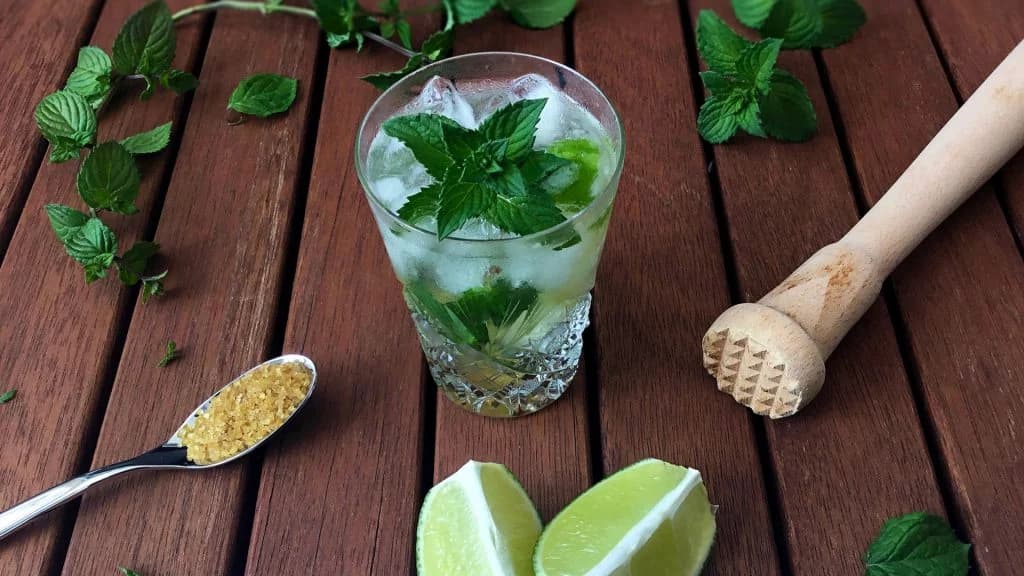Don't Muddle The Muddling: A Beginner's Guide To Mastering The Technique

You're trying out a recipe for a positively delicious-sounding cocktail when the instructions call for you to "muddle" some of the ingredients before any spirits are poured into the glass.
You cast your eyes around the kitchen and wonder if the trusty old pestle that does such a good job of pounding spices into fine dust will work as a "muddler" in a pinch.
You decide it will. So you put your ingredients into the bottom of a glass and begin hammering away at them with the pestle. Disaster strikes. The ingredients end up more mashed than muddled. The bottom of your treasured cut crystal glass bears a fine crack as a mark of your exertions. And the delicate citrusy-minty fragrance you were aiming for now has a decided tinge of…garlic?
Okay, maybe we're exaggerating that scenario the slightest bit. But for all its simplicity, the process of muddling correctly can make or break your cocktail. Fortunately, there's a technique to it, and once you master it, you'll never have to muddle your way through muddling again.
So what exactly does it entail?
To Muddle Or Not To Muddle, That Is The Question
When a cocktail recipe calls — most commonly — for ingredients like sugar, fresh herbs or fresh fruit/zest, you'll find that it includes muddling as one of the essential steps.
This means gently releasing the flavours of the ingredient to ensure it enhances those of your spirits. A case in point would be a slice of orange or lemon: the juice or pulp of either of these citrus fruits in your drink would have a different feel and taste if they were muddled — which would add the essential oils from their zest into the mix.
Similarly, merely having a sprig of mint or basil in your cocktail would make for a different experience than gently pressing down on these herbs to unlock their flavours and having them delicately infuse the liquids.
Get The Right Muddler
While a bar spoon should work in a pinch, getting a muddler for your home bar is the best course of action. A muddler is a pestle-like implement with a rounded edge on one side that nestles in your palm. The other end is usually flat, or may occasionally have "teeth" — small, pointy protrusions. This is the side that you use to press down on your ingredients.
Muddlers are available in a variety of materials, including wood, plastic or stainless steel. Which one you opt for depends on your needs and preferences. A wooden muddler is considered the classic, but does require care.
Why not just use the pestle from your kitchen mortar? There's no rule that says you can't, but do remember that traces of whatever you last ground up will remain even after cleaning, and you may not want that flavour in your drink.

Mastering Muddling
The key to the muddling technique is a lightness of touch. Don't hammer away at the ingredients or pound them as though with a mallet. Instead, take a firm hold of your muddler, place its head directly onto your ingredient/s, press down firmly, and then give a half-twist with your wrist. And that's it.
Repeat the half-twists until the aroma of the ingredient is discernible.
Not All Muddling Is Created Equal
Sugar requires a firm hand when muddling. If you're using a cube, then some other liquid — even if it's just a little bit of water — is needed in order to crush it down. Granulated sugar on the other hand would not require this step, but can be muddled directly with other ingredients.
Mint and other herbs need very delicate handling. You don't want to tear the leaves or cause them to disintegrate in your glass. Quite apart from overpowering the other flavours in the recipe, it would also mean having unwieldy bits of greens floating up your glass.
Citrus is the "Goldilocks" of this equation in that it calls for a moderate amount of pressure when being muddled. Berries and other fruit would need to be handled depending on their level of ripeness/softness.

What Do I Muddle In?
A thicker-bottomed cocktail glass works well if your recipe calls for the ingredients to be muddled directly in the serving glass. But if you're wary of cracking the glass, you can always muddle your ingredients first in a separate mixing glass or even a cocktail shaker.
Still Muddled?
We hope not! Also, muddling isn't meant for alcoholic beverages alone. Your mocktail can also shine when muddling is done right. So it's a useful way to level up your mixology expertise, no matter what you're serving (or drinking). Of course, do remember to enjoy responsibly if it is spirits you're muddling for!









